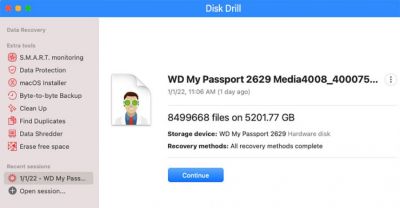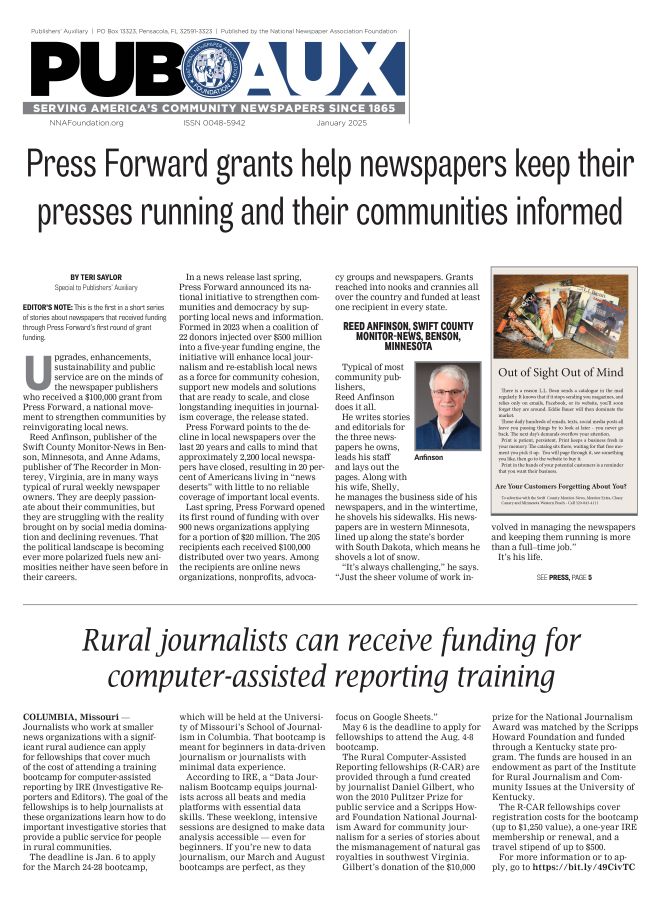FREE TRAINING GRANTS — plus, avoiding and fixing dead hard drive crises
Kevin Slimp
Feb 1, 2022


In a couple of recent columns, I touched on two topics that greatly affected my work in the last few days of 2021. They were so significant that I decided to write in more detail about both issues to kick off this first column written in 2022.
FREE TRAINING FOR YOUR STAFF
In my end-of-year column last month, I mentioned that newspapers are uniquely positioned to utilize government grants to pay for on-site training. I first became aware of this when Joel Washburn invited me to visit his paper for a day in McKenzie, Tennessee, to offer training for his entire staff a few years ago. While there, he shared that the state of Tennessee was funding my visit through a small business grant.
Since then, I’ve worked with papers in several states that have received grants to pay the entire bill for my services to offer on-site training. These grants covered the training and costs related to travel and any other expenses.
A few months ago, I assisted a weekly newspaper in another state in creating a report to be submitted to their state in hopes of acquiring a significant grant that would pay all costs related to on-site training for their staff in spring 2022. What a great Christmas present I received when I heard from the publisher of that paper to let me know the state approved the grant, and I’ll be heading to their location for several days this spring. Their grant will cover all expenses for travel and training while I’m on-site, plus six months of monthly online training and consulting for their staff afterward. Yes, it was a significant “chunk of change,” but I wasn’t surprised to learn it had been approved.
Having been involved in helping several newspapers receive grants, I’ve learned a few things that are important when applying to states for funds:
- It helps if your newspaper is locally owned. Most of the small business grants I’ve helped newspapers acquire were designated for locally owned small businesses offering training for their staff.
- It helps if the training benefits every person on staff. If I remember correctly, every time I’ve worked on-site with a grant recipient, it was to work with every staff person, including reporters, designers, editors, publishers, circulation staff, ad reps and anyone else on the payroll. Granting organizations tend to fund groups that will most benefit from training.
- It helps to ask for larger grants. It may seem like it would be easier to get a smaller grant than a larger one, but that’s often not the case. I’ve served on boards of several granting organizations over the years and know first-hand that it’s easier to give out money in large chunks than in smaller amounts. This spring, the group I’ll be visiting requested the maximum grant offered and was successful.
- It helps to have a local contact, even though grants might be offered by the state. There’s probably someone in your county government who works directly with small businesses. That’s an excellent place to begin.
Here’s my advice concerning grants for staff training. Contact the person in your county who deals with small businesses. Ask if they can provide information concerning grants provided by the state (or county) for small business training.
LESSON LEARNED CONCERNING BACKUP DRIVES
A couple of months ago, I wrote a column referring to the multiple backup drives on my desk, in addition to the off-site backup I utilize. I mentioned that I keep several drives to back up the computer (and each other), so I won’t lose crucial files in the event of a drive failure. Drive failures are not only a possibility but are likely. A few years ago, a hard drive manufacturer informed me that the average life of a drive was less than three years — so it’s essential to plan for drive failure.
During the last week of 2021, two of my backup drives failed within a day of each other. Coincidence? Possibly. Perhaps there was a power surge or something along the network that caused the drives to quit working, but whatever the case, they were dead.
I tried several utilities to revive the drives but found only one that worked well for me. It’s called Disk Drill, from 508 Software (https://www.cleverfiles.com/).
With Disk Drill, I gathered most of the files from the biggest backup drive (4 TB of information) and copied them to another (new) drive. It took about 48 hours for Disk Drill to do its work, then another six hours for me to go through the files and copy them to another drive. Because this was my second oldest backup drive, there were files on it that hadn’t been backed up to other drives, and I couldn’t afford to lose them.
I learned a couple of lessons. One was to make sure everything was backed up in at least three places. I thought I was doing that but learned some of the files pre-dated the backup routines I had set up. The second lesson was to be sure the off-site backup (I use Backblaze) is backing up not just the hard drive and network but the external backup drives as well.
I purchased two new drives. I spent a little extra and purchased solid-state (SSD) drives this time. They have a much longer lifespan than traditional USB drives and are less prone to break due to movement, shaking, etc. One is a 5-terabyte drive and the other a 2-terabyte drive. The larger drive backs up everything on both the computer and other external drives, while the 2-terabyte drive is used exclusively for Apple Time Machine, which backs up everything on my computer every few hours.
It wasn’t an inexpensive lesson, but one well worth learning.
Kevin Slimp is former director of The University of Tennessee Newspaper Institute and founder of NewspaperAcademy.com. Contact Kevin at: kevin@kevinslimp.com.










